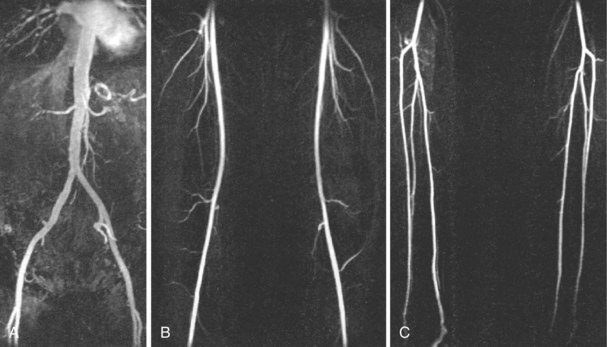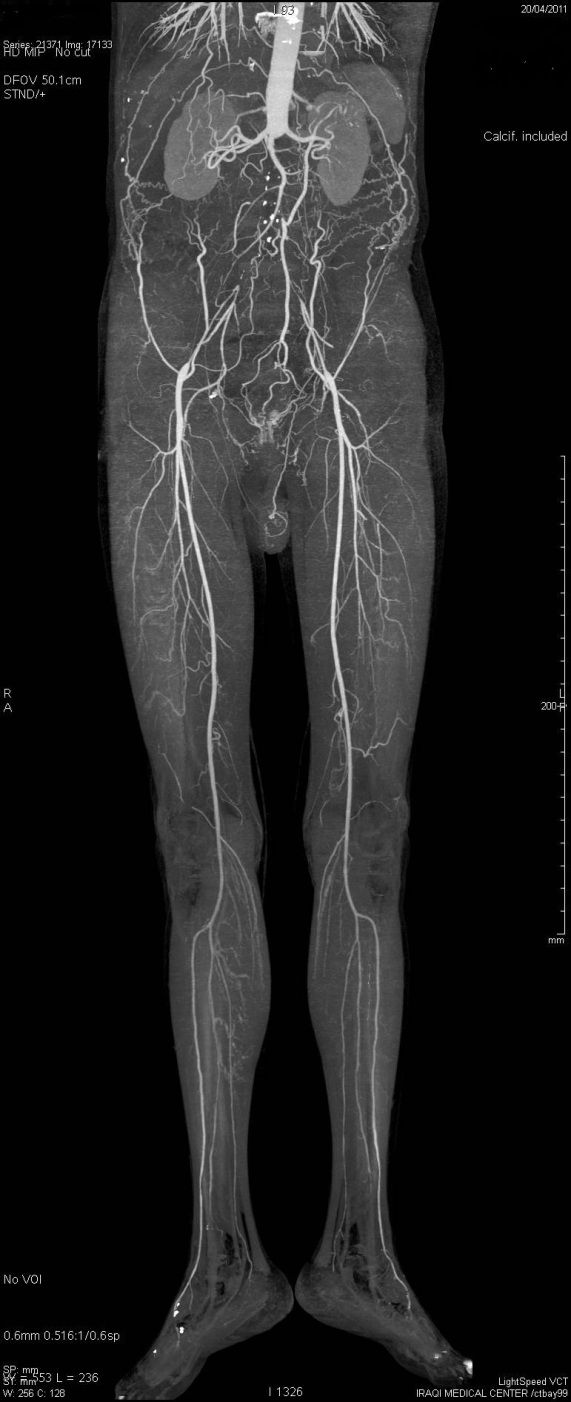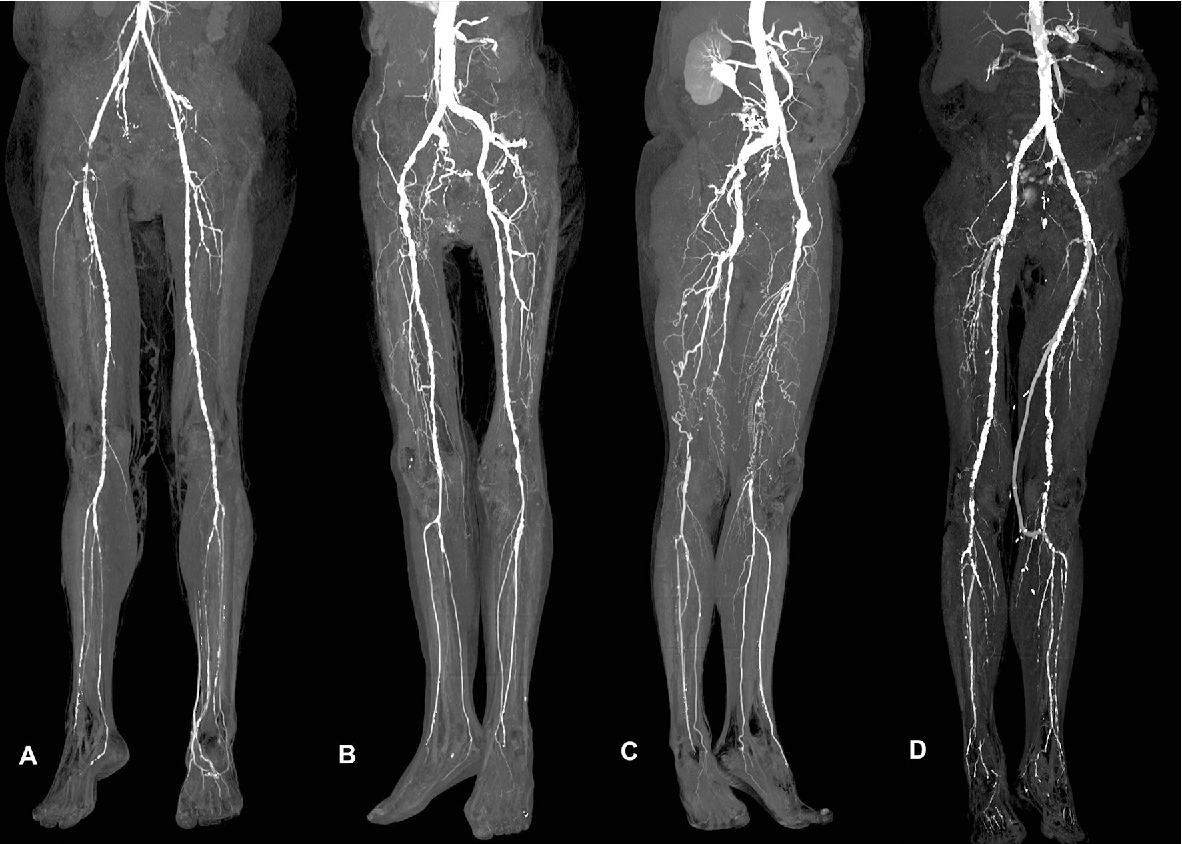Abdominal Angiogram With Bilateral Leg Runoff
2011 she got admitted in hospital for neuro strokenow dr suggested to take mri angiogram of brainthese are findings of mri angiogram of brain 1Lacunar infarcts in bilateral subcortical frontalparietal occipital white matter2Acute infarct in left ACA territory3Diffuse cerebral cerebellar atrophy4Occluded right ICA with.
Abdominal angiogram with bilateral leg runoff. Do use the LT and RT modifier with these angiography CPT codes. With an 8-channel scanner by comparison a detector collimation of 25 to 3 mm is seldom used because a higher-resolution alternative is available 8 10 to 15 mm. The difference between the codes for abdominal angiography is that 75630 includes a runoff study the physician visualizes the downstream vessels but 75625 does not.
The coded 75710 is used for unilateral and 75716 are used for bilateral study of extremity angiogram. Percutaneous transluminal angioplasty and stent deployment of the right external iliac artery. It may be used to check blood flow to the organs of the abdomen such as the liver and spleen.
An abdominal angiogram looks at the blood vessels in your belly abdomen. Rachael Edwards MD Last Reviewed. OR 5-6 mLsec for 5 sec then 3-4mLsec for 30 sec followed by 30 mL saline flush Region of scan.
There are two CPT codes for extremity angiogram code 75710 and 75716. For full extremity studies you can report 75710 Angiography extremity unilateral radiological supervision and interpretation and 75716 Angiography extremity bilateral radiological supervision and. More commonly the catheter will be repositioned to the lower part of the abdominal aorta for the imaging of the iliofemoral arteries.
It is performed to evaluate various vascular conditions such as a aneurysm ballooning of the blood vessel stenosis narrowing of a blood vessel or blockages. Tortuous bilateral common iliac artery. With the 16-row scanner a 05- to 075-mm collimation results in excessive image.
While x-ray angiography has been the method of choice for preoperative evaluation of patients with atherosclerotic disease magnetic resonance angiography MRA is emerging as a powerful noninvasive tool that is capable of providing. As shown below code 75630 includes an aortogram and visualization and interpretation of bilateral lower extremity arteries via a run-of. Percutaneous transluminal angioplasty cutting balloon and plaque excision of the right internal iliac artery.















